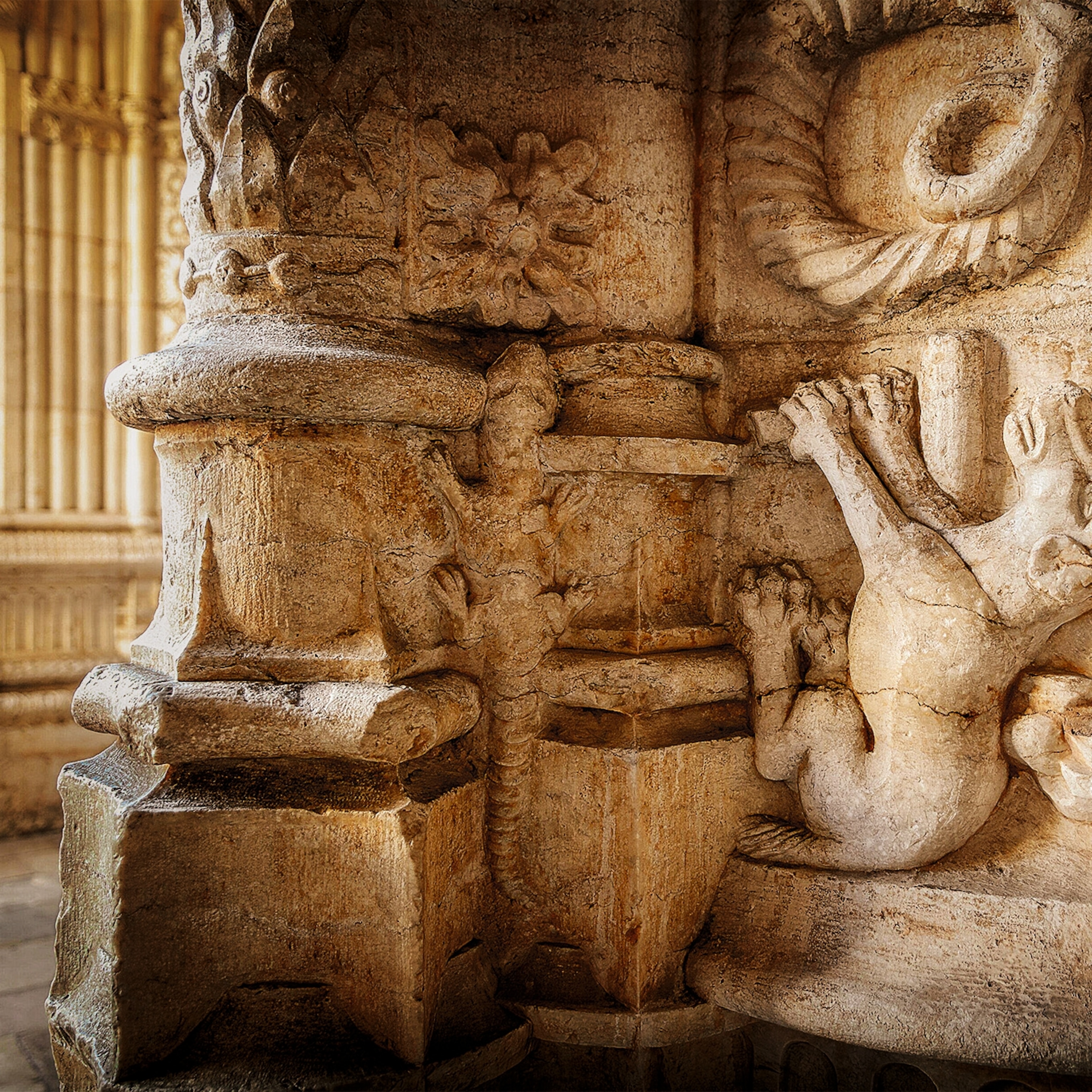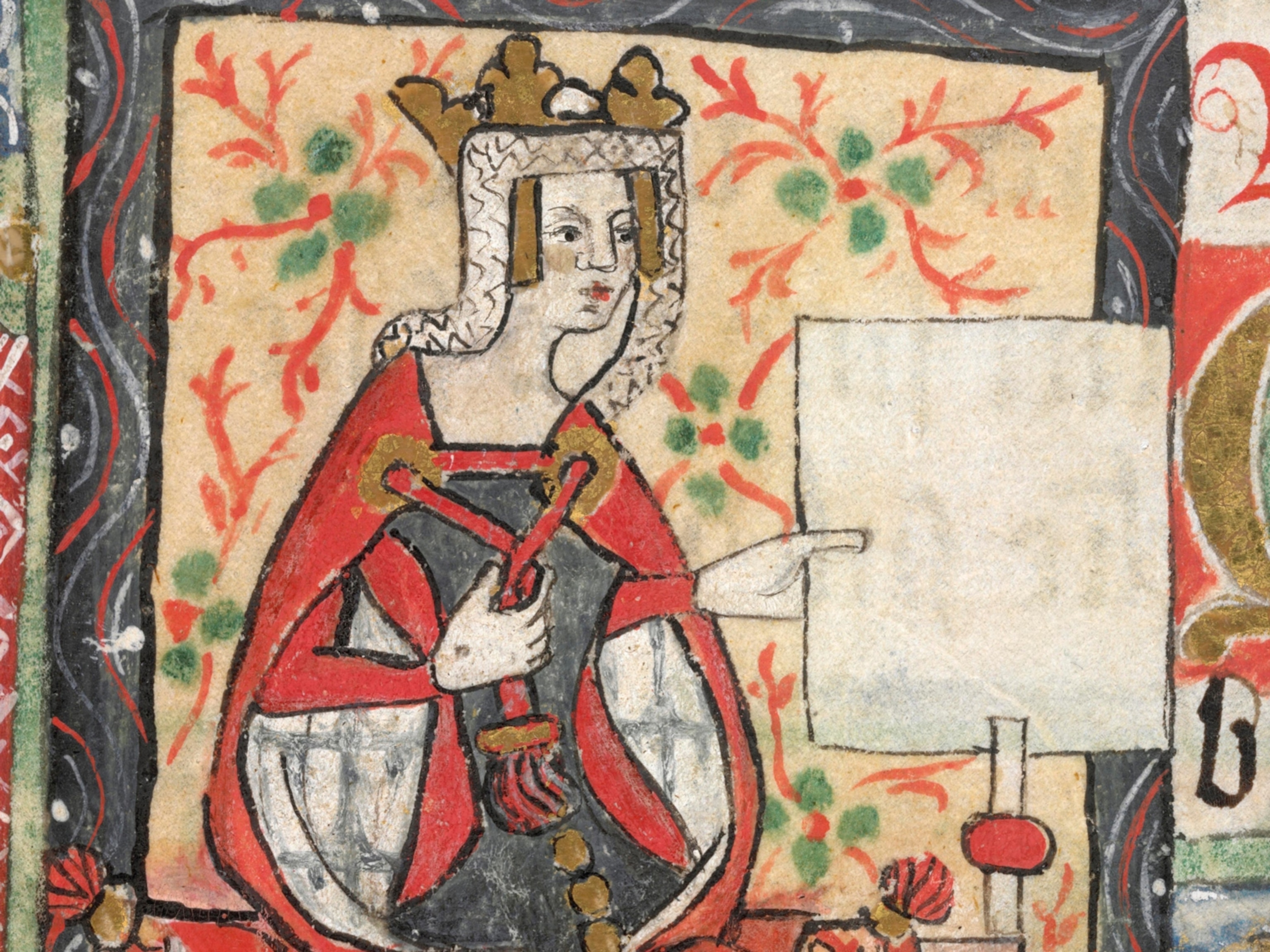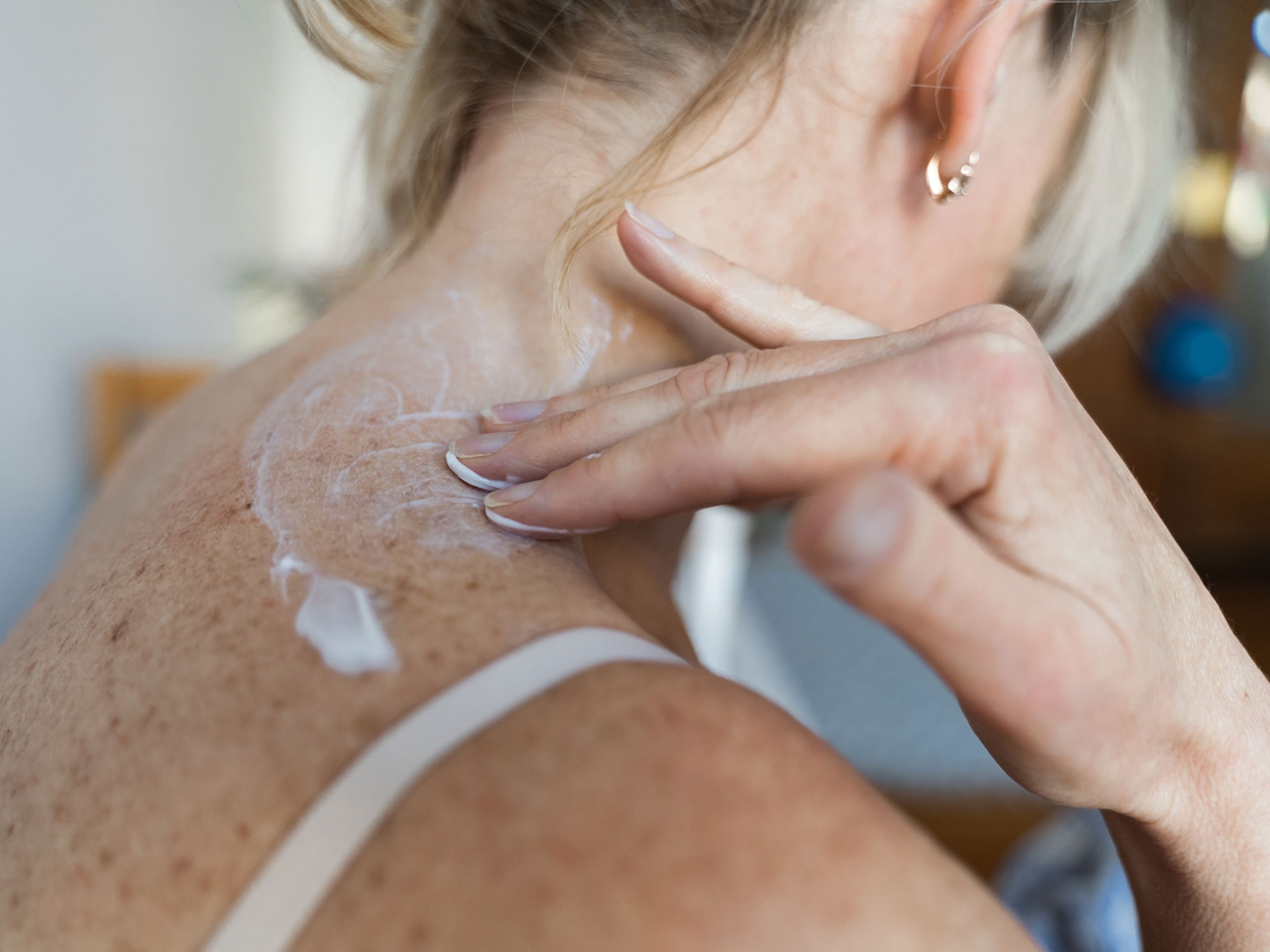Dung Art Helps Genocide Victims Recover
In Rwanda, the revival of traditional cow dung art called imigongo is helping genocide widows rebuild lives.
Nyakarambi, Rwanda — Twenty-three-year old Fabrice Ndayamdaze beams with pride whenever he speaks about his mother Basirice.
“My mother has been making paintings out of cow dung since she was 17 years old,” he says. “She learned from her mother. Among our people, learning how to make imigongo paintings was part of becoming a woman. After the genocide, my mother used that same skill to save our family.”
Imigongo is a traditional art form of the Rwandan people that is believed to date back to the 18th century. The basic process begins when a malleable mixture of cow dung and ash is sculpted onto a flat surface in elaborate geometric patterns. Once dry, the raised spirals, diamonds, zig-zags, or squares are painted using natural pigments. It is believed within the community that this technique was created and perfected by Prince Kakira, son to King Kemenyi of Gisaka.
Basirice Uwanmariya, 46, is proud to carry on the prince’s tradition with a namesake women’s art cooperative; Kakira Imigongo. Strolling through the yard of her one-story compound, Basirice points out her greatest masterpiece: a round temple-like structure with a straw roof and pad-locked door.
“When Prince Kakira created imigongo, he applied the art directly onto the walls of his palace,” she says. “This is a replica of his home. We built this to honor his legacy.”
Inside the hut, mazelike arrangements of free-standing walls are covered with a dizzying array of black and white patterns, framed in a burgundy border. Basirice’s magnum opus homage to 18th century Rwandan art feels ultra-modern, almost futuristic. But she treats the space with sacred reverence. She explains that it was important to honor the figure whose legacy has enabled her and many other Rwandan women to provide for themselves in the wake of the nation’s greatest tragedy.
The Loss of War
Basirice was born one of six siblings in Nyakarambi, Rwanda, a village 13 miles from the Tanzania border at Rusumo Falls. The region’s vast green mountains are so visually opulent that it borders on decadence. Growing up, Basirice’s home was decorated in imigongo. After learning the technique from her mother, she quickly became obsessed with creating her own original works and started selling them publically in 1987.
By 1994, Basirice was happily married to a local lawyer, had just given birth to a son, and owned a farm “with many cows.” On April 6th of that year, Rwandan President Juvénal Habyarimana (a member of the Hutu ethnicity) was assassinated when his plane was shot down from the sky. Rwanda’s Hutu majority government publically announced that his death was an act of the Tutsi extremists. Within hours of his death, an order was decreed that any military and private citizens should kill all Tutsi men, women, and children. On April 7th, 1994, the Rwanda Genocide began.
Basirice and all the members of her Tutsi family were marked for death. Within a few months, both of her parents and all of her siblings, along with an estimated 800,000 other Rwandans, were murdered. Private Hutu citizens joined militias and began to rape and murder people who had been their neighbors for generations. (Learn more about the genocide.)
To escape the mass slaughter, Basirice and her husband fled with their newborn child to nearby Tanzania. In 1997, the family returned to the small Rwandan town hoping to rebuild their shattered lives. Basirice noticed that in the wake of the tragedy many elements of traditional culture had vanished.
“When we returned home after the genocide, no one was making imigongo anymore,” she says. “But I needed to do something to start over, and I knew if the tradition was to survive I would have to do it myself.”
Rebirth Through Art
Basirice started producing and selling small-scale works to the rebuilding community. When her husband died in 1999, she knew that for her and her son Fabrice to survive, she would have to think bigger. Fabrice, now a young businessman, draws inspiration from his mother’s ability to bring people together.
“In 2000, my mother looked around her and saw so many other lost women,” he says. “The community had been shattered and everyone was scrambling to find a way to provide for themselves. She knew they would be stronger if they stood together.”
So Basirice brought other widows into her studio and taught them how to make imigongo. Soon, they were producing lots of pieces, and it began to be sold outside of the region.
Kakira Imigongo Cooperative currently employs 15 women. Almost all of them are genocide widows. Their canvasses vary from small wooden squares to customized full-wall murals. The artists will usually work collectively on a single piece. One artist will sketch a pattern on a square of wood and then trace the pattern with fingers full of cow dung. Once dry, the pattern is painted over by another artist, who uses paints made from red clay, black ash, or white kaolin, among other natural materials. The works are sanded smooth and painted several more times before going on display.
The art coming out of Kakira has gained an international following, with pieces on display in Paris, France, and promises of a New York exhibit in 2018. Although the Kakira Cooperative does not have a web presence, Fabrice—who is fluent in several languages—takes international calls and orders on his mother’s behalf.
When the shop closes, I convince Basirice and Fabrice to join me for dinner. The drive through Nyakarambi at sunset is hauntingly idyllic. Curving through the plush mountain passes, the main road is noticeably filled with people. Everyone is walking. Large groups painted gold by the setting sun smile, laugh, hold hands, and ride bicycles. It looks as if a large event just let out.
“Where is everyone going?” I ask.
Fabrice smiles, “I think people just like to be out. I think many people are happy. We are in a time when all the different people in Rwanda can have a chance to be what they want to be. I am happy to stay here and be part of this.”
“Does your mother plan to stay in this region as well?” I ask. “She is getting very popular. What if she uses up all of the cow dung?”
Fabrice laughs and translates the joke to his mother, who smiles with a quiet response in her Rundi tongue.
“She says that in Rwanda we are farmers and almost everyone in the countryside has a cow. Where there are cows there will always be dung.”








